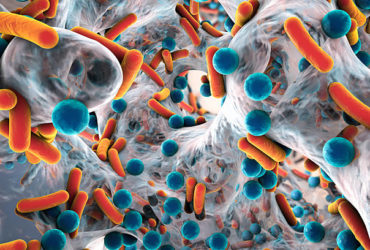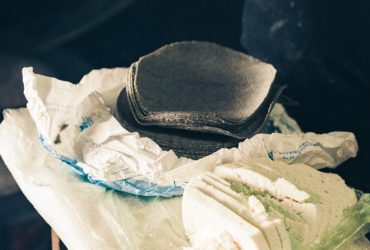Promoting Awara consumption in Nigeria to combat food insecurity
By: Iradat Bisola Oladejo
Introduction
The high price of meat limits its’ purchase in Nigeria, which negatively impacts their protein consumption, leading to malnutrition. Awara, which is a soybean curd product like tofu, should be used as an alternative protein to mitigate low consumption of protein during meals. It has been produced since the introduction of soybeans in Nigeria by the International Institute of Tropical Agriculture to improve the health and nutrition of consumers. It was developed by a soybean curd specialist by the name of Osamu Naksayama from Japan, during his work in developing a soybean curd that suits the Nigerian context, he was able to come up with the fried Awara, which was the most preferred after trying out 100 recipes of soybean curd. It is mostly consumed as a snack due to it high nutrient content and not as a plant meat in meals. Although it mimics the taste and texture of a conventional meat, most Nigerians prefer to see chunks of meat on their food rather than a plant-based alternative. However, it should be more widely employed in meals to help mitigate the rise in the prices which result in food insecurity and the global net increase in consumption of conventional meat which negatively impacts climate change
Production and traditional consumption of Awara
Soybean curd is mostly produced in the northern and western part of Nigeria. While the production process is the same, the type of coagulant used is different, the selection of which is based on locality and preference. The type of coagulant used contributes to the different names like Awara, kwaidakwai, Beske, Wara, and Gala that is been called in Nigeria. It is mostly called Awara (the most popular) and kwaidakwai in Kebbi,Sokoto and Zamfara, Beske in the western part of the country especially in Ilorin, it is also called Awara or Wara in Niger state due to it resemblance in the production method used in the making of a popular locally made cheese called Wara which is also called Awara in this part of the country. Awara is not well known in the southern andd eastern part of the country but other soybean product like soy milk can be found there. Awara is a staple food in Nigeria that is commercially sold on streets and consumed at home as snacks due to it easy process of production. When producing Awara, the main ingredients needed are soybeans, coagulants (lime juice or pap water), spices, ground pepper, onions, seasonings, water, and salt. If you want to learn how to make the mouthwatering Awara, the process follows:
STEP 1: picking dirt or impurities from the soybeans in order to make sure that it is free from physical defects
STEP 2: wash and soak for 12 hours for softening
STEP 3: grind the tempered soybean using a blender or grinding machine with a little water added
STEP 4: extract the milk from the grinded soybeans by pouring it into a cheese cloth
STEP 5: after extraction, the milk is poured into a clean pot, placed over medium heat, and allowed to boil for 15 minutes
STEP 6: after boiling for 15 minutes, the coagulants are added bit by bit. The milk starts to curd on its own from the water, this process is continued for about 25 minutes
STEP 7: after curding, the curd milk is poured into a bowl and allowed to cool for about 5 minutes
STEP 8: after cooling other ingredients are added and mixed for even distribution
STEP 9: the mixture is poured into a cheesecloth and tied tightly in order to drain water from it completely, hard objects are also put on it in order to speed up the draining
STEP 10: after draining, it is removed from the cheese cloth and cut into preferred shapes and sizes
STEP 11: pour a vegetable oil in a clean pan and place over a medium heat until hot before adding the shaped curd
STEP 12: sear on each side until it turns golden brown
STEP 13: remove from oil and allow to cool
STEP 14: after cooling Awara is ready to be served
Nutritional benefits of Awara consumption
Awara has a lot of nutritional benefits and fits into a wide variety of diets. It is highly proteinaceous and contains other nutrients like magnesium, calcium, fiber, unsaturated fatty acids, carbohydrates, vitamins B, C, and K, iron, and manganese. Due to its nutritional content, Awara aids in digestion and bowel movement, boosts the immune system, strengthens blood vessels, reduces cholesterol, improves bone health, and is good for diabetics and lactose intolerant individuals.
Conclusion
Awara is a popular snack food that should be more widely-considered as a plant meat substitute in meal planning in Nigeria. It is mostly consumed in the northern and western part of the country as snacks and side dishes due to it nutritional content, but it could be more beneficial to the economy of Nigeria if it is used as an alternative protein source in meals. This could help solve the issue of low protein consumption during meals due to the high increase in the prices of conventional meat. This will help reduce food insecurity, lessen climate change impacts from animal agriculture, and serve to support a healthy and sustainable Agro-food system. The only way this can be achieved is for farmers, food industries, government, and institutions to start taking interest in introducing alternative protein to consumers in new and innovative ways to help make the unpopular meat alternative more popular during meal planning so that consumers can make healthier and eco-friendly choices.
References
- How to make awara: https://northpad.ng/how-to-make-awara-soya-beans-cake/
- Health benefits of awara: https://ng.opera.news/ng/en/food/431a5daa8cb0d4f0980a50e15076fbfd
- Featured image: from Pexels, used with permission from the contributor, Alexandria Victoria
 About the Author:
About the Author:
Iradat is an undergraduate of Food Science and Technology, currently the President of Impact Leaders Club University of Calabar chapter, and a YALI RLC west Africa alumni. Iradat has over four years of experience in community development, leadership, and volunteering. She is a food enthusiast and is also passionate about tackling issues related to food security, girls and women empowerment, and making positive impact in her country and in the world. Iradat believes in a world where good food will be available to all without discrimination.






Faculty of life and science natural
link : https://www.univ-mosta.dz/fsnv/